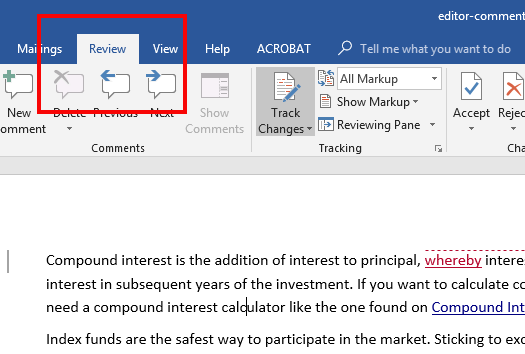
It is very clear we will be getting confused to see where to find the receive connector protocol logs since the transport level architecture have been bifurcated in Exchange 2013 and we have multiple folders like the front end, hub, protocol log unlike Exchange
#Excel 2016 review tracking how to#
Now we will look into how to analyze the receive connector protocol logs with help of Excel as we did for Message tracking.įirst, copy the logs from the below location: This then you will feel comfortable with this type of message tracking Cook for situations like where you need to filter out multiple parameters. Getting used to this will take some time but once after if you start analyzing the message tracking through We have multiple options like date time, Client IP, server IP, recipients through which we will be able to isolate a particular transaction very easily. The below screenshot is the important parameter which should be checked and for a successful transaction i.e column (source and event-id) as shown below.įor a failure transaction we will not be having the receive status as shown above Just select Test Email for Message Tracking as shown belowīelow output is the successful transaction of the message transaction after the filter is applied for our example scenario. Just select the Message subject column drop down and uncheck select all as shown below. In below example we are going to filter a particular transaction with Message subject and below is the output for successful transaction. Now we have number of options to filter message transactions. After copying the MSGTRKMS logs in Excel, just filter the category column as shown below. We can use other logs in deep dive analysis of cases where we suspect the mail not being delivered to mailbox server and in a few cases where we are unable to find any transaction in MSGTRKMS logs to see if the mail is been delivered to the mailbox serverīut MSGTRKMS will give us the information 99 percent of the time. MSGTRKMS is sufficient for us to calculate the message tracking in most of the situations. MSGTRKMS These logs are associated with messages sent from mailboxes by the Mailbox Transport Submission service.MSGTRKMD These logs are associated with messages delivered to mailboxes by the Mailbox Transport Delivery service.For more information, see Moderated Transport. MSGTRKMA These logs are associated with the approvals and rejections used by moderated transport.MSGTRK These logs are associated with the Transport service.Note: There will be four types of message tracking logs in Exchange 2013 unlike in Exchange 2010 we have only two. If still we need to analyze the data without log parser for single transaction it’s possible with sender and recipient to check if the mail transaction has been successful.įor analyzing the logs in message tracking you can follow the below steps:Ĭopy the message tracking logs from the below location from the mailbox server. So we are sending test email with subject “Test Email for Message Tracking”.įor analyzing the verbose logs it’s always better if we can use the log parser tool. Now we are going to send a few test emails so that the logs get generated which would be ideal for us to analyze the logs. Steps to turn on Protocol Logs in Exchange 2013:ĭouble-click on receive connector tab and set the protocol logging level to verbose. In the Message tracking log section, select the following: On the server properties page, click Transport Logs.Ĥ. Select the Mailbox server you want to configure, and then click Edit.

In the EAC, navigate to Servers > Servers.Ģ. Steps to turn on Message Tracking in Exchange 2013:ġ.


Since Exchange 2013 the hub transport servers have been removed and the Message tracking logs are storon in the mailbox servers. On Message Tracking in Hub transport servers. Earlier in Exchange 2007 & 2010, we used to turn In this article, we will be looking at how to enable protocol logging and message tracking in Exchange 2013 and analyzing the protocol and message tracking logs in a little bit different way through Excel. Message tracking and protocol logs analysis is one of the best ways to identify whether the problem exists in Exchange or elsewhere to prove that Exchange has successfully done its mail transaction on its end. During the time of troubleshooting in mail delay and issues when users reporting emails not being received, it's a little bit tougher to isolate and identify the problem.


 0 kommentar(er)
0 kommentar(er)
